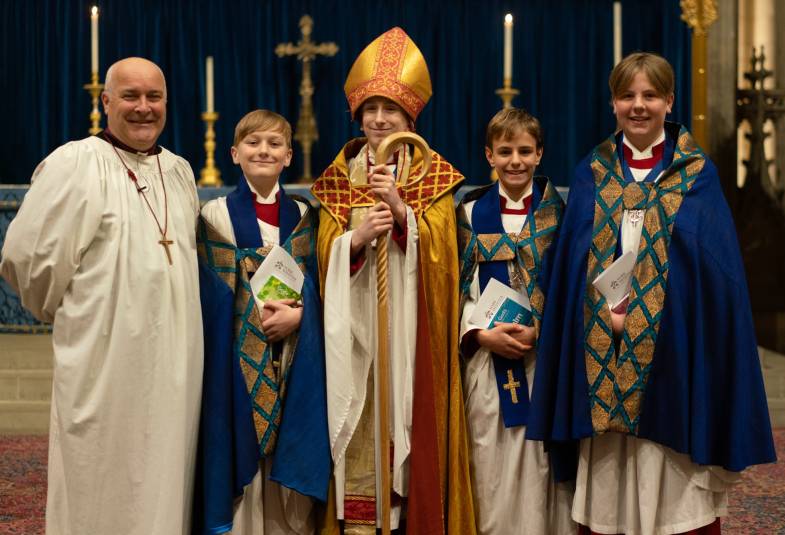11/12/2023
The Archbishop of York Stephen Cottrell, was unseated from his throne at York Minster’s Saturday Evensong Service (9 December), by Edward Sangwine, aged 12, who was appointed as the cathedral’s Chorister Bishop for 2023. Edward succeeds Eliza Haddow who in 2022, was installed as the Minster’s first Chorister Bishop since 1537.
Chorister Bishop Edward was supported by his “canons” - Sam Blackstone aged 13 and Thomas Titchener and Edward Gawthorp both aged 12. The boys wore their robes of office and each received a book of prayers. Chorister Bishop Edward, received a bishop’s mitre, cope, pectoral cross and a pastoral staff, hand-carved in the Minster Stoneyard and first used by Eliza last year. Edward moved to the Archbishop’s Cathedra (his throne), to give a short address on behalf of all the choristers and children everywhere. He also gave a prayer of blessing for the people.
The choristers were part of an ancient ceremony, inspired by the Gospel of St Matthew. Jesus said to his disciples that to enter the Kingdom of God, one must become “as a child” (Matthew 18.3). Jesus wanted to teach his disciples lessons about humility and belonging to the Kingdom of God by placing children at the centre of his ministry and work.
Commenting on the tradition, Archbishop Stephen said: "This tradition of a child bishop is a reminder that we are all God’s children and all equal in the sight of God. The church can seem to be a very hierarchical place but the reality is that the church and the message of the Kingdom of God belongs to everyone, perhaps especially to the children. Part of the vision and strategy of the Church of England is to grow younger and more diverse; welcoming choristers – and allowing them to unseat me – is but one way in which their voice can be part of the story of the church and of God’s Kingdom."

About Chorister Bishops
Originating in Medieval times, the ceremony was an important annual tradition in many cathedrals. On the 6th December, the Feast of St Nicholas, a chorister was elected bishop while others acted as canons carrying out all the offices except the mass, until Holy Innocents’ Day (28th December). The ceremony was restricted in many cathedrals in the later Middle Ages but at York Minster, the chorister bishops retained wide powers throughout the 14th and 15th centuries, collecting monies from around the Diocese and distributing gifts to the poor. Lists of the ‘young bishops’ exist from 1416 until 1537 when the custom was suppressed by Henry VIII. In recent years, the ceremony has been revived in a number of English cathedrals creating a unique occasion for children’s voices to be heard.